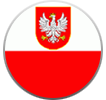On this page:
- Education in Europe
- Education in Poland
- Education in Great Britain
- Education in Germany
- Education in France
- Education in Spain
Education in Europe
In the European Union, there’s no uniform educational policy. No higher institution intervenes or imposes specific requirements regarding education in these countries. Each country is entirely responsible for its education system and curriculum.
Thus, education can look completely different in these countries. Although the European Union supports education, even with subsidies for projects or trips of gifted students, it doesn’t interfere with the education system itself. In addition, the development of teaching is undertaken by UNESCO, the Council of Europe, as well as the United Nations (especially the sector of Education, Science, and Culture).
Education in Poland
Polish educational law clearly states that the core curriculum must contain teaching content and skills tailored to specific stages of education. Based on this, school evaluation criteria and examination requirements are created. The curriculum itself, however, is selected by specific teachers, based on approval by the principal. However, the Ministry of Education determines which subjects are taught in Polish schools.
The latest regulation came into force at the end of 2017.
The first, early school stage consists of eight classes: primary school. The timetable contains about twenty hours of classes per week. It includes Polish, mathematical, technical, artistic, and music classes.
From the fourth grade, a specific division into subjects, i.e., Polish, physical education, or geography, is introduced. Pupils finish school with an eight-grade exam aimed at assessing the knowledge acquired at this stage of education.
Secondary education covers general high schools, as well as technical and vocational schools. Students can choose some of the subjects they will take. At the end of high school, they must pass the matriculation examination. This is one of the most important stages of education—obtaining positive results in high school facilitates further education at universities and colleges.
Recently, the Polish education system has undergone major changes, i.e., in 2019, junior high schools—three-year schools, intended for students aged 12 to 14—were eliminated. In 2019, as part of the 2017 educational system reform in Poland, they disappeared completely from the Polish school system, which is currently two-tier—primary school and high school. The process of closing down junior high schools took place gradually.
Education in Great Britain
The compulsory education system in Great Britain consists of four stages: primary school, secondary school (equivalent to already closed junior high schools), high school, and higher education. Children start learning at the age of five.
Primary school consists of two levels: Key Stage 1 and 2. The program itself includes English, math, nature, history, and physical education, among other subjects. The subjects are thus similar to those in the Polish education system.
At this stage, there aren’t specific grades—parents only receive a description showing the strengths and weaknesses of the student, along with data on their learning progress. Students take standardized exams, but regardless of the results, move on to the next level of education.
From ages of 11 to 14, children attend secondary school. Here, they start to get graded. Unlike Polish schools, the UK has a letter system. "A" means the highest rating, "F" the lowest. This stage ends with an obligatory state exam.
The last level of compulsory British education is high school. The curriculum already includes fewer subjects, and the focus is mainly on the classes with which students want to pursue further education in colleges. Education ends with an exam comparable to the Polish Matura, called the GCSE (General Certificate of Secondary Education).
Education in Germany
Education in Germany, like most European countries, starts in primary school—Grundschule. Children under the age of six start school. The main aim of this stage of teaching is for students to begin to master writing and reading, as well as basic math. After completing this level, children receive a teacher's recommendation based on their learning and skills. This helps parents choose the right high school for their child.
After completing primary school in Germany, students can choose from further education in three institutions:
Hauptschule: emphasizes preparation for a specific profession. After graduating, students receive a Hauptschulabschluss, which enables them to practice a craft or art ;
Realschule: intended mainly for people who are interested in the economy or a specific job. The curriculum here mainly includes science and foreign languages;
Gymnasium: most resembles a Polish high school. The wide range of subjects aims to prepare students for college education. This stage of education is completed with Abitur, i.e., the matriculation exam.
Education in France
Education in France is divided into three compulsory levels: l'école élémentaire, le collège, and le lycee. French Children who are at least six years old go to primary school. It consists of two stages: initial teaching and skill development. Students acquire elementary skills in writing, reading, and counting. After graduation, they automatically move to another level of education.
The second stage of study involves le college. This curriculum consists of specific subjects. At the end, students must pass the state le brevet exam, but this has no impact on the further promotion of the child.
At this level of education, students have a choice of two schools: a three-year high school (lycee) or a vocational school (lycee professional). The high school is completed with a hl diploma (baccalaureate) enabling further studies in higher education. Vocational school prepares students for a specific profession, but they can take the matriculation exam even at this stage— they just have to complete an additional two years of education.
Education in Spain
Education in Spain has two basic levels: educación primaria (primary school) and educación secundaria (secondary school). The first stage of education is divided into three cycles: lower, medium, and higher. During each of them, one teacher supervises the students, and teaches the basic principles of social coexistence.
After completing the first level of education, the student automatically goes to high school (secondary school). The first stage of educación secundaria obligatoria mainly includes lessons on elementary subjects, a foreign language, as well as general vocational education.
Students are assessed using points collected from tests and activity in the classroom. The number of points determines the final assessment at the end of the year. A school-leaving certificate at this phase enables further education in a high school (bachillerato) or a vocational school (ciclos formativos).
Bachillerato is designed to prepare students to study at university or college. The main focus here is on lessons related to young people's interests or future career plans. Education ends with passing the matriculation exam. The final grade for the matura exam consists of the results of the exam and an average of all a student’s high school grades.
People who read this also viewed:
- Warsaw private schools
- Kraków private schools
- Poznań private schools
- Wrocław private schools
- Łódź private schools
- Rzeszów private schools
- Gdańsk & Gdynia private schools
-
Advice Guide
- ABC of educational terminology: Glossary of terms and concepts
- The admissions process
- Advantages and disadvantages of studying in an international school
- The application process
- Benefits of Polish private schools
- Bilingual schools
- Boarding schools
- Choosing a private or nonpublic school in Poland
- Compare schools in Poland
- English schools in Warsaw
- Homeschooling
- International schools in Kraków
- International schools
- Private school interviews
- Music education
- Myths about private education
- Non-public schools in Poland
- School open houses
- Our Kids Interview: Get to know EF Academy Oxford
- Our Kids Interview: Get to know Open School
- Our Kids interview: Get to know Regent College International Schools
- Our Kids Interview: Get to know The American School of Warsaw
- Our Kids Interview: Get to know The British School Warsaw
- Our Kids Interview: Get to know Wrocław Cosmopolitan School (two interviews, new video)
- Poland school profiles
- Private day schools
- Gifted schools & programs
- Private Jewish schools in Poland
- Language schools
- Private school tuition and costs in Poland
- Private schools in Poland
- Private schools in Poland offering French-language immersion
- English immersion schools
- Poland school uniforms
- Public versus non-public schools in Poland
- Private school questions
- Private school rankings
- Reasons for choosing private schools - Our Kids’s survey report
- Religious schools
- Schools and classes for children with ADHD in Poland
- Social Schools
- Special educational needs (SPE) certificates
- Special needs schools
- Study abroad at a private school
- The first annual non-public school fair in Poland
- The first annual Our Kids non-public school expo in Warsaw was a great success
- Third Private School Expo in Warsaw - summary
- Types of schools
- Types of schools in Warsaw
- Warsaw preschool costs
- Why private school?
- Why parents go private
-
Grades
- Boarding high schools
- Choosing a high school in Poland
- Mokotow High School Campus - a new Warsaw high school and Thames British School campus
- Montessori nursery schools
- Montessori preschools
- Our Kids Interview: Get to know FSA School
- Our Kids Interview: Get to know KIDS & Co.
- Our Kids Interview: Get to know Polish British Academy of Warsaw
- Our Kids Interview: Get to know The English Playhouse and The English Primary
- Poland education: grade levels
- Preschools in Warsaw
- Private & non-public preschools
- Private & non-public primary schools
- Private bilingual elementary schools in Warsaw
- Private high schools
- Private high schools in Warsaw
- Private middle schools
- Nursery schools
- Private primary schools in Warsaw
- Social high schools
- Social primary schools
-
Locations
- Boarding schools in Warsaw
- English schools in Kraków
- International Baccalaureate (IB) schools in Warsaw
- International schools in Warsaw
- Montessori schools in Warsaw
- Non-public schools in Warsaw
- Our Kids Interview: Get to know EF Academy
- Our Kids interview: Get to know Excellence in Education better
- Our Kids Interview: Get to know PRIMUS Non-Public Primary School No. 47 and Non-Public Secondary School
- Our Kids Interview: Get to know the Canadian School of Warsaw
- Our Kids Interview: Get to know The Primary and Secondary Schools of the Sisters of Nazareth in Warsaw
- Private Catholic and Christian schools in Warsaw
- Private day schools in Warsaw
- Private language schools in Warsaw
- Private schools in Bialystok
- Bydgoszcz schools
- Częstochowa schools
- Private schools in Gdańsk & Gdynia
- Katowice schools
- Private schools in Krakow
- Lublin schools
- Olsztyn schools
- Private schools in Poznań
- Private schools in Rzeszów
- Szczecin schools
- Private schools Warsaw
- Private schools in Wrocław
- Zielona Góra schools
- Private schools in Łódź
- Private special needs schools in Warsaw







 POL
POL CAN
CAN